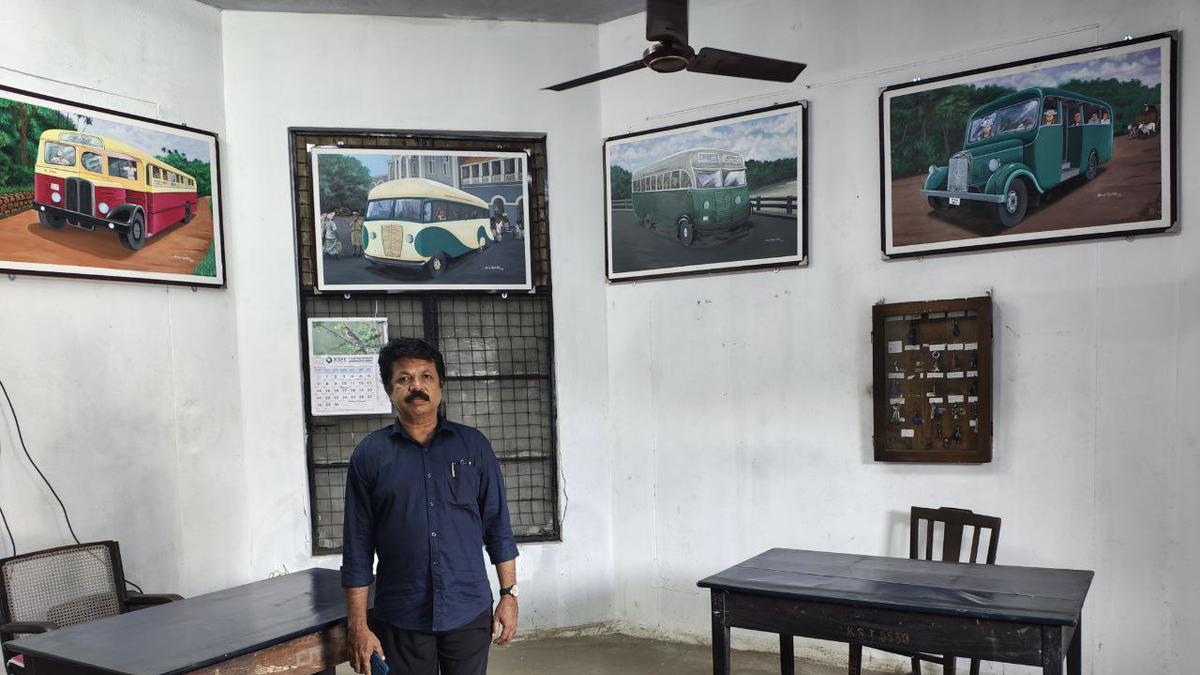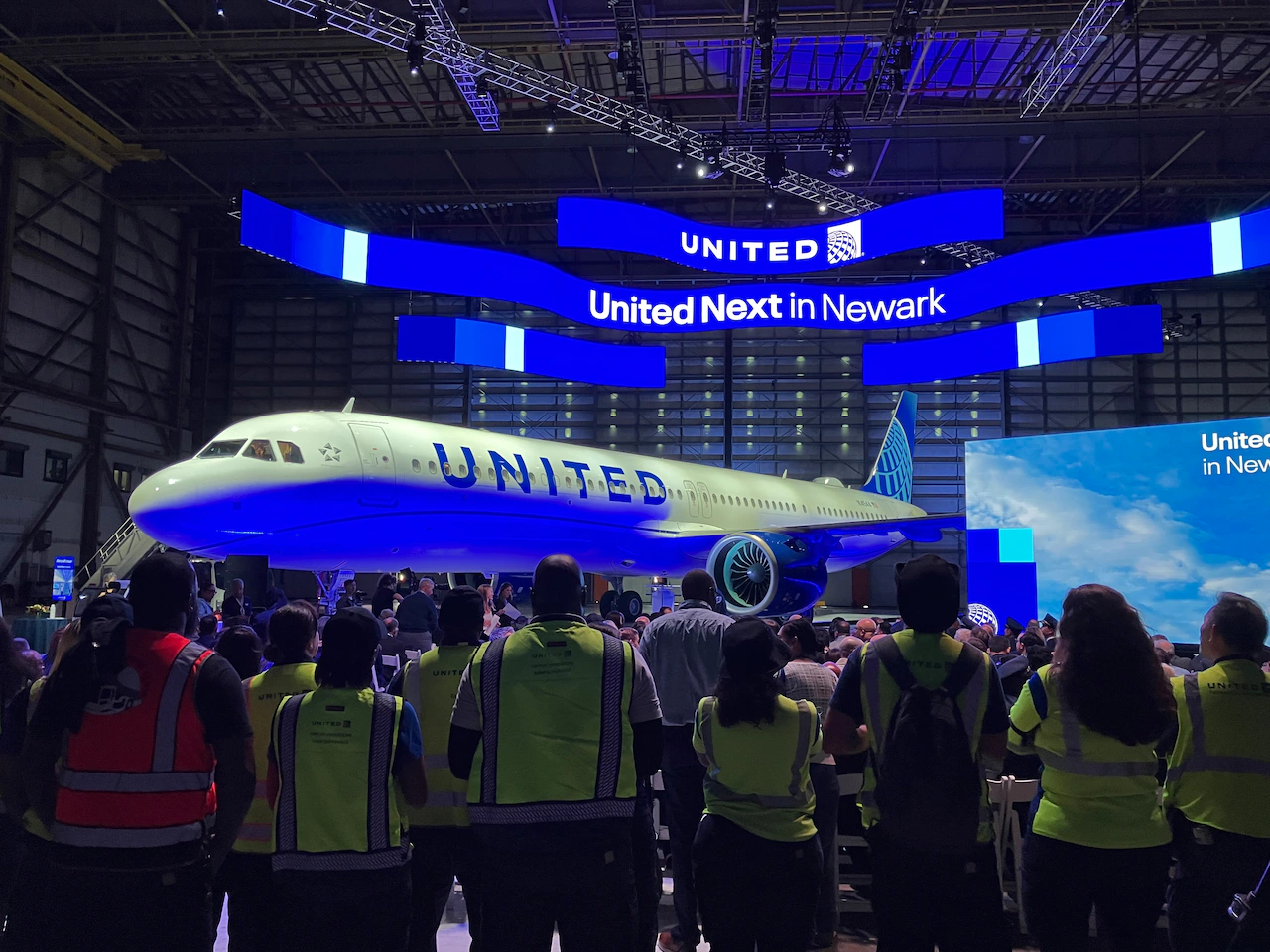The Dimming Dream: How visa restrictions are crushing professional ambitions in the US and UK
By Dominic Senayah 57pm,Ebenezer Afanyi Dadzie
Copyright myjoyonline

For millions of skilled professionals worldwide, the United States and United Kingdom have long represented beacons of opportunity—economies where talent, ambition, and hard work could translate into prosperous careers and, ultimately, permanent residency. Yet in 2025, that promise has become increasingly hollow. A confluence of stringent visa restrictions, escalating financial barriers, and uncertain pathways to permanent residency has left countless professionals in limbo, their career trajectories frozen mid-flight, their futures hanging by bureaucratic threads.
The dream of building a life in these English-speaking powerhouses is not merely dimming; for many, it is extinguishing altogether. What emerges is a portrait of two nations inadvertently alienating the very talent they claim to seek, creating systems so labyrinthine and punitive that even those who navigate them successfully find themselves trapped in perpetual uncertainty.
America’s Sudden Seismic Shift
The United States has long relied on the H-1B visa programme to attract highly skilled foreign workers, particularly in technology, engineering, and specialised fields. The programme, which allows American companies to temporarily employ foreign workers in speciality occupations, has been the primary vehicle for skilled migration. However, beginning 12:01 a.m. EDT on September 21, 2025, H-1B petitions for workers currently outside the U.S. are being denied unless accompanied by a $100,000 supplemental fee per petition, according to a presidential proclamation.
This extraordinary fee represents more than a policy adjustment—it is a seismic rupture in the American immigration landscape. For context, the previous H-1B application fees totalled several thousand dollars, an amount already prohibitive for many employers and candidates. A hundred-thousand-dollar surcharge transforms the H-1B from an accessible pathway into an exclusive privilege reserved for only the most elite positions or the most desperate employers.
The immediate human impact is profound. Ravi, a software engineer from Bangalore who had secured a position with a mid-sized technology firm in Austin, Texas, saw his offer withdrawn within days of the proclamation. “They simply couldn’t justify the expense,” he explains, his voice heavy with resignation. “I spent two years building connections, went through multiple interview rounds, and relocated my entire life plan around this opportunity. Now I’m back to square one.”
Ravi’s experience is far from unique. The proclamation has created a two-tiered system: those already holding H-1B visas can continue their careers relatively unimpeded, whilst the proclamation does not restrict the ability of current visa holders to travel to or from the United States, but new entrants face insurmountable barriers. This creates perverse incentives and market distortions, where employers must choose between promoting internal H-1B holders—regardless of merit—or paying astronomical sums for fresh talent.
The Green Card Mirage
Even for those who successfully navigate the H-1B labyrinth, the path to permanent residency remains frustratingly opaque. The American green card system is notoriously backlogged, particularly for applicants from India and China, where wait times can stretch into decades. An H-1B holder from Mumbai might secure her visa at age 28, work diligently for 15 years, contribute significantly to her employer and the American economy, yet still find herself decades away from permanent residency.
This indefinite limbo creates profound psychological and professional consequences. H-1B holders cannot easily change jobs without restarting sponsorship processes. They cannot pursue entrepreneurial ventures. They struggle to secure mortgages or make long-term investments. Their children, if born overseas, age out of dependent visas upon turning 21, facing potential deportation despite having spent their formative years in America. The American dream, for these professionals, becomes an American purgatory—present but perpetually out of reach.
The recent rule changes, whilst ostensibly aimed at “modernising” the system, have added complexity rather than clarity. The Department of Homeland Security’s H-1B final rule took effect on Friday, January 17, 2025, modernising and improving requirements for the H-1B nonimmigrant visa programme, yet for applicants, these “improvements” often feel like additional hurdles rather than facilitations.
Britain’s Paradoxical Pivot
Across the Atlantic, the United Kingdom presents a different but equally challenging landscape. Following Brexit and the implementation of its points-based immigration system, Britain positioned itself as a destination hungry for global talent. The Skilled Worker visa replaced the Tier 2 (General) visa, promising a more streamlined and equitable system. In practice, the reality has proven considerably more complex.
As of 22 July 2025, the general salary threshold for Skilled Worker visas is £41,700, with employers also required to meet the occupation-specific going rate, which may be higher, based on a 37.5-hour work week. This represents a significant increase from previous thresholds and prices many roles—particularly in regions outside London—out of the skilled migration market entirely.
The salary threshold increases reflect broader political pressures to reduce net migration figures. Yet they create impossible contradictions. Sectors facing genuine skills shortages, from healthcare to engineering, find themselves unable to sponsor international workers whose salaries fall below the threshold, even when no domestic candidates are available. A nurse from the Philippines, qualified and experienced, might find her application rejected not due to lack of skill or need, but simply because NHS salary structures don’t align with Home Office thresholds.
Presently, the UK government has proposed perhaps the most draconian change to its immigration system in recent memory. The government is increasing the standard qualifying period for permanent residence (also known as indefinite leave to remain or settlement) from five to ten years, with some people qualifying sooner based on criteria yet to be confirmed. This single policy shift effectively doubles the period of uncertainty, transforming what was already a challenging pathway into a marathon of bureaucratic endurance.
The Decade of Doubt
The implications of a ten-year pathway to indefinite leave to remain cannot be overstated. A professional arriving in the UK at age 30 would be 40 before achieving permanent residency—assuming continuous compliance with visa conditions, consistent employment, and no administrative delays. A decade is sufficient time to build a career, establish a family, purchase property, and integrate deeply into British society. Yet for ten years, that professional would remain fundamentally insecure, one redundancy or policy change away from having to leave everything behind.
Currently, most people on a ‘route to settlement’ can apply to live in the UK permanently after 5 years, known as getting ‘indefinite leave to remain’ (ILR), but the government plans to increase the wait to 10 years, a change that will affect most visas that permit eventual settlement, including the Skilled Worker route. This proposal has generated significant controversy, with migration experts and business groups warning that it will make the UK fundamentally less competitive in attracting global talent.
Consider Aseye, a data scientist from Ghana working for a financial services firm in London. She arrived in 2022 on a Skilled Worker visa, built a team, bought a flat, and began contributing to her local community. Under the current system, she would apply for indefinite leave to remain in 2027. Under the proposed changes, that timeline extends to 2032. “I’m essentially asking my family to live in limbo for a decade,” she says. “My children will grow up not knowing if Britain is truly their home. How do I plan anything meaningful with that hanging over us?”
The Eligible Occupations Shrink
Adding to the uncertainty, the UK has progressively narrowed the list of occupations eligible for Skilled Worker visa sponsorship. An initial reduction to the list of jobs eligible for Skilled Worker visa sponsorship took effect on 22 July 2025. Whilst the government frames these reductions as targeting low-skilled or oversupplied occupations, the practical effect is to create additional unpredictability. A professional might begin their UK career in an eligible occupation only to find that category removed from the shortage list mid-career, complicating visa renewals and settlement applications.
These changes occur against a backdrop of broader restrictions. Care workers, who were previously able to bring dependents, now face restrictions if their roles fall below certain skill levels. The threshold for Global Business Mobility visas has risen substantially, with a Senior or Specialist Worker or UK Expansion Worker required to earn at least £52,500 a year from 22 July 2025, up from £48,500. Each adjustment, viewed in isolation, might appear modest. Cumulatively, they create an immigration system that feels increasingly hostile to the very professionals it ostensibly seeks to attract.
The Psychological Toll
Beyond the practical challenges—the fees, the forms, the wait times—lies a profound psychological burden. Immigration uncertainty is not merely a bureaucratic inconvenience; it is existential anxiety. It affects career decisions, family planning, mental health, and fundamental questions of identity and belonging.
Dr Emmanuel Azusong, a clinical psychologist who works extensively with migrant professionals, describes a phenomenon she terms “provisional life syndrome.” “These are high-achieving individuals who have succeeded by planning, working hard, and building toward goals,” she explains. “But they’re forced to live in a state of perpetual provisionality. They can’t fully invest in their present because their future is fundamentally uncertain. They can’t fully grieve their home countries because they might need to return. They exist in a liminal space that takes a serious psychological toll.”
The impact extends to families. Children growing up in these circumstances face their own uncertainties. Partners on dependent visas often have restricted work rights, creating financial stress and limiting career development. The cumulative effect is a community of skilled professionals who, despite their qualifications and contributions, feel fundamentally unwelcome.
Economic Contradictions
The irony is that both the United States and the United Kingdom desperately need skilled workers. Both countries face significant skills gaps in critical sectors: technology, healthcare, engineering, and research. Both have ageing populations that will require growing workforces to sustain economic growth and support social services. Both purport to be global, outward-looking economies that value talent and entrepreneurship. Yet their immigration policies seem fundamentally disconnected from these economic realities. By making skilled migration prohibitively expensive, uncertain, and complicated, they push talent toward competitor nations. Canada, Australia, Singapore, and increasingly, European nations with more straightforward pathways to permanent residency are becoming preferred destinations for the same professionals who once would have chosen London or New York without hesitation.
A 2024 survey by the Peterson Institute for International Economics found that 62% of H-1B holders were actively exploring emigration to other countries due to green card uncertainties. Similarly, polling by the Chartered Institute of Personnel and Development found that UK employers were finding it increasingly difficult to attract international talent, with many candidates citing visa complexity and settlement uncertainty as primary deterrents.
The Global Talent Race
The global competition for skilled workers has intensified dramatically in recent years. Nations increasingly recognise that human capital is perhaps the most critical factor in economic competitiveness. Those that can attract and retain talented, educated, entrepreneurial individuals gain enormous advantages. Those who erect barriers, intentionally or otherwise, risk economic stagnation.
Canada offers a particularly instructive contrast. Its Express Entry system provides clear, predictable pathways to permanent residency, often within 12 to 18 months of arrival. Its Provincial Nominee Programmes allow regions facing specific skill shortages to directly recruit international talent. The result has been a surge in applications from professionals who might previously have chosen the United States or the United Kingdom.
Similarly, Portugal’s Digital Nomad Visa, Estonia’s e-Residency programme, and Germany’s EU Blue Card all represent competing approaches that prioritise accessibility and clarity over restriction and complexity. Skilled professionals increasingly have options, and they are exercising them.
Unintended Consequences
The current trajectory of visa restrictions in both the United States and the United Kingdom is producing several unintended consequences that may prove economically and socially harmful:
Brain drain is accelerating. Professionals already in these countries on temporary visas are leaving, taking their skills, investments, and contributions with them. Universities report declining applications from international students who see diminishing opportunities for post-graduation employment. Technology companies are establishing development centres in Toronto, Dublin, and Bangalore partly because hiring there is simply easier than navigating the US or UK immigration systems.
Diversity is declining. The professionals most able to navigate expensive, complex visa systems or to justify hundred-thousand-dollar sponsorship fees tend to come from privileged backgrounds or work for the very largest corporations. This narrows the talent pool, reducing the diversity of perspectives and experiences that drive innovation.
As of now, resentment is building. The professional migrants these systems purport to welcome feel increasingly unwelcome. Many describe feeling exploited—valued for their labour and tax contributions but denied the security and belonging that would allow them to fully invest in their adopted homes. This resentment affects social cohesion and, ultimately, the attractiveness of these destinations.
A Plea for Perspective
Immigration policy is undeniably complex, necessarily balancing economic needs, labour market protection, security concerns, and social cohesion. No system can satisfy all constituencies, and governments must make difficult trade-offs. However, the current approaches in both the United States and the United Kingdom seem disconnected from stated policy objectives.
If the goal is to attract the best global talent, systems should be accessible, transparent, and offer reasonable pathways to permanence. If the goal is to protect domestic workers, policies should focus on labour market enforcement, wage standards, and training investments rather than blanket restrictions that create shortages. If the goal is to reduce migration numbers, that should be stated explicitly rather than disguised behind technical requirements that produce uncertainty and suffering.
What is certain is that the current systems are failing the very people they purport to serve—both the nations seeking talent and the professionals seeking opportunity. The dimming dream of building lives in the United States or the United Kingdom is not merely a personal tragedy for affected individuals; it represents a strategic economic error that may take decades to correct.
Conclusion: The Fading Beacon
The Statue of Liberty bears the famous inscription: “Give me your tired, your poor, your huddled masses yearning to breathe free.” In 2025, that sentiment feels archaic, a relic of a more optimistic era. Today’s reality for skilled professionals is more prosaic: give us a hundred thousand dollars, wait in indefinite queues, accept perpetual uncertainty, and perhaps—if you’re extraordinarily persistent and fortunate—we might eventually grant you the privilege of calling this place home.
Britain, too, has long prided itself on being open, global, and welcoming. “London is open,” declared its mayor in the Brexit aftermath. Yet openness measured in ten-year pathways to settlement and ever-rising salary thresholds rings hollow.
The tragedy is that both nations need what these professionals offer. They need the innovation, the energy, the tax revenue, the skills, and the global perspectives. They need the nurses and the engineers, the researchers and the entrepreneurs. They need people willing to uproot their lives, to invest in new communities, to contribute to economic growth and social vitality.
But need, apparently, is insufficient. And so the beacons dim, the queues lengthen, the fees rise, and the dream defers. The question is how long these nations can afford the luxury of turning away the very talent their futures depend upon. The answer, increasingly, is that they cannot. But by the time that becomes undeniable, the most talented may have already looked elsewhere, and the opportunity will have passed.
About the Author:
Dominic Senayah, an International Relations Researcher who dives deep into the realms of Trade, Migration, and Diplomacy. With a rich background in Business Development and Marketing Communications, I bring a unique perspective to my analysis of global issues. My goal is to enrich academic discussions and enhance public understanding of the intricate dynamics that shape international relations.



